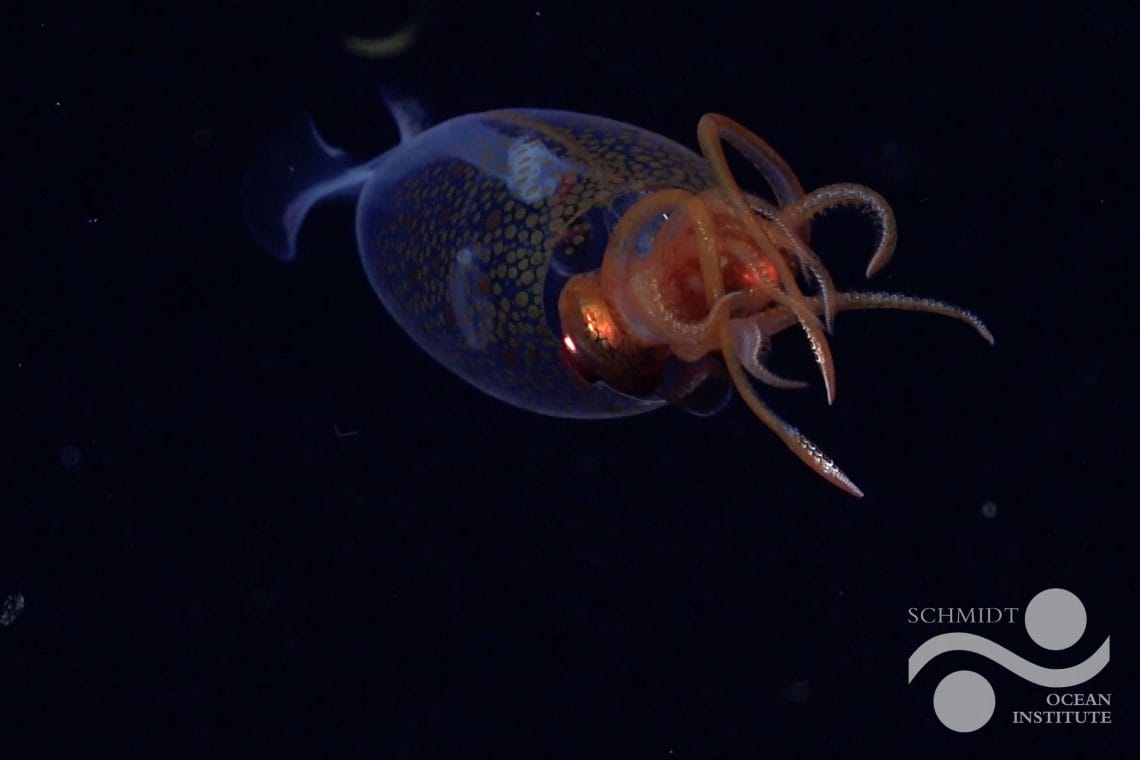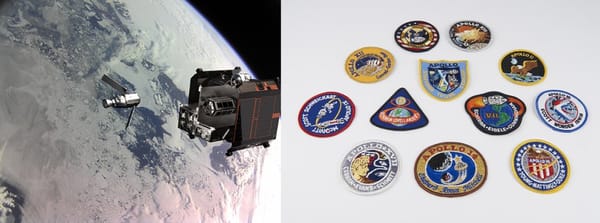First Confirmed Footage of a Colossal Squid—and it’s a Baby!

By Jill Dando News
In a thrilling deep-sea discovery, scientists have captured the first-ever video of a colossal squid in its natural habitat.
The sighting happened on March 9 near the South Sandwich Islands in the South Atlantic Ocean, during a research expedition aboard the Schmidt Ocean Institute’s ship, Falkor (too).
The squid, a juvenile about 30 centimeters long (1 foot), was filmed at 600 meters (1968 feet) deep by the Institute’s underwater robot, ROV SuBastian.
It’s the first time anyone has seen a colossal squid alive in the deep ocean—right on the 100th anniversary of the species’ scientific identification.
Colossal squid can grow up to 7 meters (23 feet) and weigh as much as 500 kilograms (1100 lbs), making them the heaviest invertebrates on Earth.
But until now, scientists have only encountered them as remains in predators’ stomachs or found dying near the surface.
"It's exciting to see the first in situ footage of a juvenile colossal and humbling to think that they have no idea that humans exist," said Dr. Kat Bolstad from Auckland University of Technology. “For 100 years, we’ve mostly known them from leftovers in whales or as fishery bycatch.”
The discovery was part of a 35-day expedition by Ocean Census, a global collaboration between the Schmidt Ocean Institute, The Nippon Foundation-Nekton, and teams from the UK, Germany, and the British Antarctic Survey.
Even more exciting? Just weeks earlier, on January 25, another rare squid—the glacial glass squid (Galiteuthis glacialis)—was filmed alive for the first time in the Southern Ocean near Antarctica, at a depth of 687 meters (2254 feet).

That footage showed the squid drifting with its arms raised in a “cockatoo” pose, a known behavior among glass squids. Deep-sea expert Dr. Thom Linley spotted it live on screen and contacted Bolstad to help confirm what they were seeing. Fellow expert Dr. Aaron Evans also verified the footage.
While juvenile colossal squid and G. glacialis look alike—with see-through bodies and hooked tentacles—the colossal squid stands out with hooks on all eight arms.
“It’s incredible that we can tap into the expertise of scientists around the world live from the ship,” said Dr. Michelle Taylor, the expedition’s chief scientist. “The Ocean Census network is proud to work with Schmidt Ocean Institute to speed up species discovery and share it with the world in real time.”
Dr. Jyotika Virmani, the Institute’s executive director, called the back-to-back discoveries “remarkable,” adding: “They show how little we’ve seen of the Southern Ocean’s incredible wildlife.”
The ROV SuBastian has now filmed the first confirmed footage of at least four deep-sea squid species, including the Ram’s Horn Squid (Spirula spirula) in 2020 and Promachoteuthis in 2024, with another discovery still under review.
“These unforgettable moments remind us the ocean is full of mysteries waiting to be uncovered,” Virmani said.





